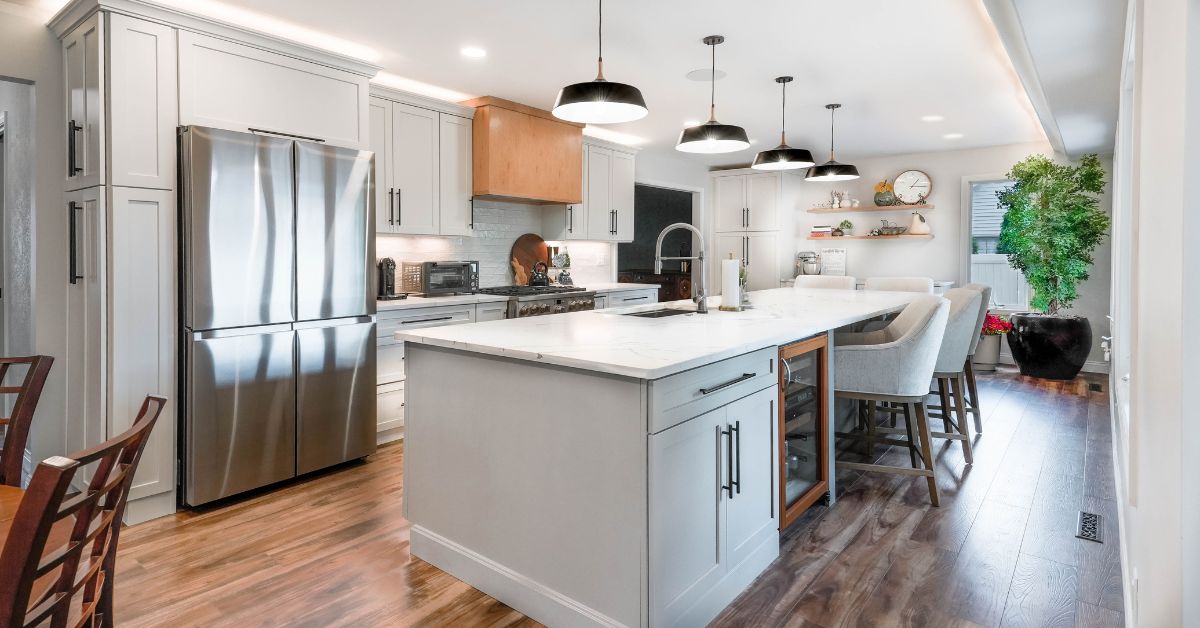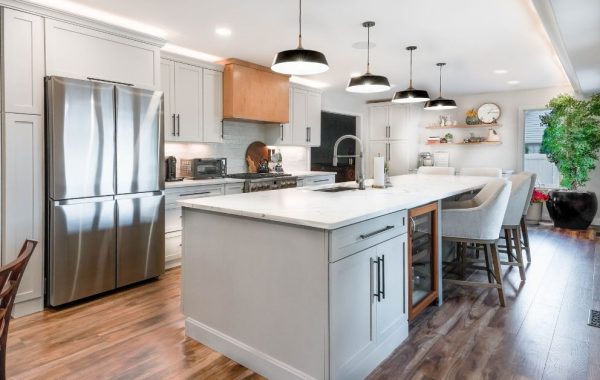
The Differences Between Remodels, Renovations & Restorations
When modifying a structure, you’ll need to understand the differences between remodeling, renovating, and restoring, as each serves a different purpose and meets unique needs. Often used interchangeably, these terms encompass distinct processes that could influence timelines, costs, and overall outcomes.
You might consider whether you need a complete change that alters the structure, a refresh to a dated space, or a process to bring something back to its former glory. Understanding these differences is beneficial for ensuring your vision becomes a reality and plays a critical role in clearly communicating your goals with professional contractors.
By learning the differences, you can plan, budget, and prioritize your project. Whether you’re embarking on a personal residential transformation or tackling a commercial upgrade, knowing the characteristics of these processes will empower you to make confident, informed decisions.
What Is a Remodel?
A remodel involves changing the structure, layout, or function of a space. This type of project typically alters the existing setup to create something entirely new in its place. This is possible by knocking down a wall to create an open concept living room or turning a basement into a home office. Remodels frequently require significant structural work, including plumbing and electrical adjustments, and tend to focus on reinventing a space.
For many homeowners, remodeling offers a chance to modernize or personalize their property. However, remodels are the most intensive of the three project types, often requiring higher budgets and longer completion times.
When to Choose a Remodel
Deciding to remodel is ideal when your goal is to solve a functional issue. If your kitchen feels cramped or lacks modern appliances, undertaking a remodel allows you to reconfigure the space entirely to meet your needs. Remodeling is the right choice if you want to adapt your home for a growing family, convert unused spaces, or significantly increase resale value.
Remodels are ideal for homes requiring structural updates or those where certain areas have fallen out of alignment with current design trends. However, you must consider the budget and time commitment carefully.
What Is a Renovation?
Renovations aim to modernize or elevate a property’s features, bringing them up to current standards. These projects are more cosmetic and often include fixing damage, improving finishes, or upgrading appliances.
Renovating a bathroom could involve replacing old fixtures and installing contemporary tiles without altering the layout. Homeowners often opt for renovations to refresh outdated rooms or improve functionality without undertaking major construction work.
Remodel vs. Renovation: A Key Difference

While remodeling seeks to transform a space, renovation focuses on refreshing or updating the current features without making major structural changes. Renovations might include repainting walls, replacing outdated flooring, or upgrading cabinetry and countertops. This distinction is important, as renovations are typically less invasive and require fewer resources than remodels.
Both approaches involve improving a space, but remodels extensively reconfigure an area, while renovations enhance what’s already there. When deciding between the two, consider the functional requirements of your project and the scope of change you want to achieve.
The Purpose of Restoration
Restoration focuses on returning a property or a feature to its original condition. This term is most frequently associated with historic properties, where preserving the building’s authenticity and heritage is a priority. Restoration projects emphasize repairing and maintaining the original design, materials, and construction techniques.
Restoring an antique home might include repairing original woodwork, replacing period-accurate windows, and using paint colors that match the building’s era. Restoration aims to celebrate a property’s history while ensuring its functionality for future generations.
How Restorations Differ from Renovations
Unlike renovations, which seek to update and modernize, restorations have a big relationship with historical accuracy and authenticity. Renovations allow for more creative freedom, while restorations demand strict attention to detail and authentic materials.
For homeowners with historic properties, restorations are essential for maintaining the cultural significance of the structure. However, these projects often come with unique challenges, such as sourcing specialized materials or complying with preservation laws.
The Role of General Contractors in Property Projects
Whether planning a remodel, renovation, or restoration, hiring experienced contractors is essential for success. General contractors manage project timelines, budgets, and labor while ensuring the finished product meets your vision.
When working with Peoria general contractors, you’ll benefit from their expertise in handling various project types, navigating local building codes, and coordinating reliable subcontractors. Choosing the right team for your project helps streamline the process and ensures the work meets the highest quality standard.
Financial Considerations for Each Option

Budgeting is critical in deciding between remodeling, renovating, or restoring. Remodels typically require the highest budgets due to their structural demands, custom design elements, and extended timelines. Renovations are a more cost-effective option, as they primarily focus on aesthetic improvements. Restorations vary widely in cost, depending on the property’s condition and the availability of authentic materials.
Understanding the financial commitment required for each project type helps ensure you allocate sufficient resources for a successful outcome.
Common Misconceptions
Learning the main differences between these terms will prevent confusion about project goals and expectations, which could lead to disappointment and frustration. One common misconception is that all improvements require tearing down walls or significant demolition when, in fact, many renovations and restorations involve minimal structural alteration.
Some believe that restorations are unaffordable. However, restoring elements of a home, such as woodwork or a fireplace, can enhance its character and offer unique design appeal even in modern properties.
How to Choose the Right Approach for Your Property
When faced with a decision to remodel, renovate, or restore, start by assessing your goals and the condition of your property. Ask yourself whether your priority is functionality, modernity, or historical preservation. Factor in your budget, timeline, and the expertise of contractors in your area to guide your choice.
By fully understanding the differences between remodels, renovations, and restorations, and working with experienced professionals, you can achieve the desired transformation while maximizing your resources. Planning carefully and setting realistic expectations will make your property improvement project a rewarding experience.
Each of these approaches offers unique opportunities to improve or preserve a space. While remodels reinvent and reimagine, renovations refresh and modernize, and restorations honor the past by maintaining authenticity. By clearly defining your goals, you’ll ensure a seamless process and a result that aligns with your vision. Whether modernizing, updating, or preserving, every project can lead to a property that better suits your needs and preferences.



